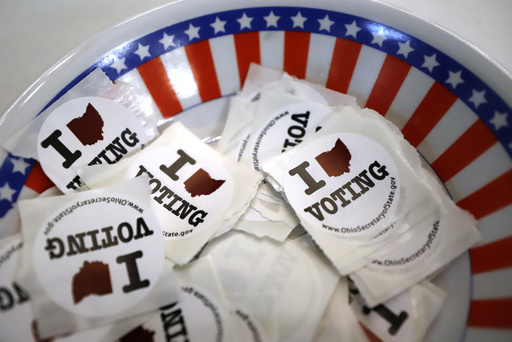
WASHINGTON — The political landscape is heating up as Vice President Kamala Harris and former President Donald Trump vie for the presidency. However, the focus in Ohio during the upcoming general election on November 5 has narrowed significantly to a crucial Senate race.
Democrat Sherrod Brown is seeking a fourth consecutive term in the U.S. Senate, facing what is predicted to be his most challenging campaign yet. His Republican rival, Bernie Moreno, a businessman from Cleveland, garnered the endorsement of Trump during a highly competitive GOP primary in March. Ohio’s role as a presidential battleground state has diminished in recent years; Joe Biden notably became the first Democratic president since John F. Kennedy not to win Ohio in his successful campaign in 2020. Nonetheless, the Harris-Trump showdown still casts a shadow over the Senate race, which will significantly influence the distribution of power in the Senate.
Earlier this year, Brown urged Biden to step down from the presidential race shortly after a troubling debate performance against Trump, ultimately throwing his support behind Harris for the nomination. Brown’s campaign dismissed accusations from Moreno suggesting that Brown is distancing himself from Harris, maintaining a positive front. Meanwhile, JD Vance, another Ohioan and the GOP’s vice presidential candidate, along with Trump, have drawn attention to the state by disseminating unfounded theories regarding Haitian immigrants.
This Senate race is expected to be the most expensive of the current election cycle, with expenditures from the candidates and associated groups surpassing $400 million on campaign advertisements, as tracked by AdImpact. Reports indicate that by early October, Brown had spent over $80 million on his campaign, substantially outpacing Moreno’s investment of $19 million. Financially, both candidates entered October with relatively comparable resources; Brown held $4.5 million, while Moreno reported $3.2 million after infusing $4.5 million into his campaign during the primary.
In addition to the high-profile Senate race, two Democratic congresswomen from Ohio are also defending their seats against formidable Republican challengers. Incumbent Marcy Kaptur in the 9th Congressional District is facing Republican Derek Merrin, while first-term U.S. Representative Emilia Sykes competes against Republican Kevin Coughlin in the 13th District.
Ohio’s election is set for November 5, with polls closing at 7:30 p.m. ET. There are 17 electoral votes at stake in the presidential contest, which the leading candidates include Harris (D), Trump (R), along with several third-party contenders. The key races are outlined as follows:
– U.S. Senate: Brown (D) vs. Moreno (R)
– 9th Congressional District: Kaptur (D) vs. Merrin (R)
– 13th Congressional District: Sykes (D) vs. Coughlin (R)
– Ballot measures: Issue 1 (to establish a citizens redistricting commission)
In observing previous election trends, both the 2020 presidential race and the 2022 Senate race showed that early votes often leaned Democratic. After polls closed, early mail-in and in-person votes typically give Democratic candidates an initial advantage; however, this lead often dwindles as more Election Day votes are counted, traditionally favoring Republican candidates.
Republicans have traditionally garnered stronger support in western Ohio, particularly along the Indiana border and central regions beyond Columbus. Democratic support is primarily concentrated in major urban areas including Columbus, Cleveland, and Cincinnati, as well as Toledo. In prior statewide elections, candidates like Biden and Ryan have performed well in these urban centers. Brown’s chances for re-election will hinge on retaining support in these key areas while also making inroads in pivotal counties such as Montgomery, Lorain, and Mahoning, where he had success during his previous campaign.
Election reporting standards dictate that winners are declared only when it is clear that trailing candidates cannot close the vote gap. Automatic recounts in Ohio are triggered when margins are under 0.25% in statewide races or 0.5% in district races. Historical voting patterns indicate that the final turnout can fluctuate significantly based on various factors, including early voting trends and the demographic makeup of participating counties.
Overall, voter registration continues to rise, with over 8 million registered voters recorded ahead of the 2024 elections and turnout from previous presidential elections indicating a robust civic engagement landscape in Ohio.
